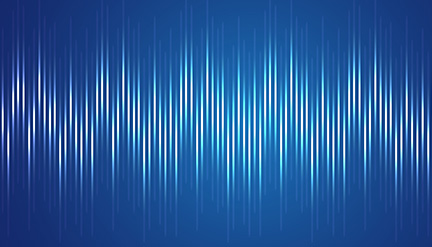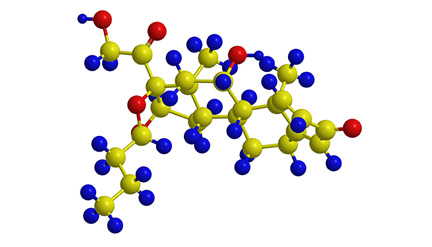PAIN TREATMENT & PAIN SOLUTIONS
RELIEF OF PAIN THROUGH MODERN PAIN TREATMENT APPROACHES
PAIN INTERRUPTS ALL ASPECTS OF DAILY LIFE.
Non-narcotic Pain Management
Our office does not prescribe narcotic medications to manage pain. Our pain management physicians believe that long-term pain management is accomplished by getting to the source of the pain and by providing interventions & therapies that address those issues.
Minimally-Invasive Procedures
Minimally invasive treatments are procedures that don’t require surgery or cutting into the body. For the treatment of neck or back pain and other orthopedic pain problems, these modalities provide effective, efficient and long term results for patients. These modern treatments make surgery to the affected area no longer necessary.

Regenerative Medicine
The use of chemical medical stimulants to promote healing and regeneration of new tissue has been used since 1937. Within the last decade millions of dollars have been spent on research investigating stem cell and blood platelet tissue regeneration. We at Palm Beach Spine & Diagnostic Institute utilize the new breakthrough techniques to promote healing and repair of damaged and injured body structures.
Regenerative medicine is often used for, but not limited to the following conditions:
Ankle & Foot
Plantar fasciitis, arthritic & degenerative joints, chronic partial tendon tears, chronic ligament strain, and chronic Achilles tendinitis
Hip/Pelvis/SI Joints
Sacroiliac joint dysfunction, hip joint arthritis, bursitis, hamstring strain, Pyriformis syndrome, and Trochanteric bursitis
Knee
Degenerative and rheumatoid arthritis, quadriceps strain or partial tear, Partial ACL tears, Patellar tendinitis/tendinopathy, partial meniscus tears, Osgood-Schlatter’s disease, Chondromalacia patella, and other Tendon injuries.
Shoulder
Rotator cuff tendonitis/tendinosis and partial tears, Biceps tendinitis/tendinosis, Supraspinatus, Infraspinatus & Subscapularis tendonitis/tendinosis and A/C joint injuries and pain, partial Labral tears.
Elbow
Golf and Tennis Elbow, distal biceps tendon partial tear’ ulnar collateral ligament injury
Platelet Rich Plasma Injection Therapy - PRP IN West Palm Beach
When to Consider PRP Therapy
PRP can be an excellent choice to treat any tendon, ligament or joint pain, injury or loss of function. PRP is also beneficial in treating arthritis and many common degenerative conditions.
Platelet rich plasma injection therapy has gained much attention nationally for helping several notable football champions rebound from injury to play in the Super Bowl, and we are pleased to announce that it is possible to get PRP in West Palm Beach.
How Platelet Rich Plasma Therapy Works
A platelet rich plasma injection is all natural therapy that uses the patient’s own platelet rich plasma. The procedure is simple. The patient’s blood is drawn from a vein and placed into a centrifuge that spins at high speeds. This process creates a plasma that has a rich concentration of platelets as well as bioactive proteins and various growth factors. With the guidance of X-ray or ultrasound, these platelets are then injected directly into the specific joints, tendons, or ligaments. The plasma rich platelets will be attracted to the damaged area, producing healing proteins called “growth factors” that stimulate the body’s natural healing and regeneration process; the result is a faster, more advanced healing process.
Prolotherapy Injections
A Florida Academy of Pain Medicine position paper, reviewing 40 case studies with 530,000 participants, noted an improvement of 45% to 82% in the ability to return to work and participate in previous functional activities.
Research in the area of Regenerative Medicine and Prolotherapy has been enhanced with the new interest in stem cells and the potential of repairing and regenerating human tissue. This rapidly growing area of medical treatment will continue to be on the forefront of medical research with continued innovative treatments and applications.
Sacroiliac Joint Radiofrequency Rhizotomy
Many adults suffer from acute and chronic low back pain. Approximately twenty percent of low back pain is caused by the sacroiliac joint, a joint located on both sides of the lower back at the base of the spine. The sacroiliac joint (SIJ) is formed by a triangular bone, the sacrum, which wedges into the pelvic girdle. When walking or with movement, weight is shifted alternately down one side, then the other. The SIJ normally moves with a rotation and a sliding movement as we walk. When it malfunctions, there is slippage, or loosening and stretching of the joint. This malfunction and stretching of the joint and joint capsule causes the pain with standing, walking and often sitting.
For the majority of patients, the Sacroiliac Rhizotomy completely relieves the severe pain and surgery is not needed!
Inflammation
Trauma causes damage to a part of the body. The body responds by creating an inflammatory process. Inflammation is the body’s protective mechanism to prevent infection and start a healing process. Numerous chemicals, including cytokines, metalloproteinase, leukotrienes, and proteases, phospholipase A-2, the arachidonic acid cascade and others are released with inflammation. Antibodies and specialized cells, such as macrophages, platelets, and stem cells, are attracted to the area of injury. Most of the time repair and healing is the result of this complex process.
Chronic Inflammation
Unfortunately, with repetitive stress the inflammatory process continues for a long period of time or indefinitely. This is frequently seen with chronic ligament pain, tendinopathies, tendinosis, and chronic joint inflammation. Some of the more common ailments exhibiting this pathology are: back and neck pain, tennis elbow, golfers elbow, plantar fasciitis, Achilles tendinitis, rotator cuff syndrome, sacroiliitis, chronic joint pain and many more. Almost any part of the body can remain chronically inflamed long after the precipitating injury.
Preventing Chronic Inflammation
Inflammation following both open and closed injuries should resolve in 2-3 weeks, depending upon the severity of the trauma and injury. Immobilization and anti-inflammatory medication may be indicated. If, after two weeks the inflammation has not resolved, your condition should be evaluated. Chronic inflammation should not be allowed to continue for long periods of time as it causes additional damage and increased pain over time.

Radiofrequency (RFA)
Radiofrequency is an energy like laser. It is more precise than laser and can travel through a very fine needle-probe. Radiofrequency, like laser, can be directed to cut a nerve. Each cut or lesion interrupts the transmission of a specific nerve and therefore stops the sensation of pain from reaching the brain. Radiofrequency procedures can give you one to two years of pain relief. The radiofrequency procedure may then be repeated if the pain returns.
How is Radiofrequency used for pain coming from the neck, MID and low back?
Facet Radiofrequency Denervation
Facet joints are small joints in the back-side of the spine that stabilize our back and neck and allow us to be upright. Facets also enable us to turn and twist our bodies. These joints have synovial linings and fluid like all other joints or articulations in our body. Facet joints are highly flexible and are constantly moving with our daily activities.
WHY ARE THEY PAINFUL?
Because these joints are constantly moving, they are highly susceptible to injury and wear and tear. They often degenerate from wear and tear over time and with age. When damaged by trauma or the effects of age and arthritis, they can cause unrelenting, severe pain in the neck, chest or low back.
WHO GETS FACET PAIN?
Often back pain and neck pain are caused by previous trauma such as an automobile accident, a sports injury or a fall. Studies have shown that the majority of whiplash injuries and pain in the neck following an automobile accident arise from the facet joints. With Lumbar Facet injuries, the pain even goes down into the legs and can feel like sciatica.
WHAT DO WE DO AT PALM BEACH SPINE & DIAGNOSTIC INSTITUTE TO TREAT FACET PAIN?
If it is determined that your pain is caused from your facets and there are no contraindications, then one option maybe to inject a small dose of anti-inflammatory steroid and local anesthetic into each facet joint. This is done using an x-ray machine so that the medications can be placed with precision into each facet joint. The actual procedure takes only about twenty minutes to perform.
HOW LONG WILL THE RF TREATMENT WORK?
Some people respond to steroid injections much better than others. In some cases patients get complete relief from a single injection. Others may need two or more treatments. If you get good short-term relief from one or two injections, but the pain keeps coming back, then a Radiofrequency (RF) treatment may be considered. This is a minimally invasive procedure where the physician uses radiofrequency to break the communication link that signals pain from the spine to your brain by essentially numbing the nerve at the painful joint.

Steroid Injections
Steroids are effective in resolving an acute inflammation from an injury. Steroid injections can be a treatment of choice for certain non-chronic pain conditions.
Wrist & Hand: arthritis and chronic joint sprains
Prolotherapy
Platelet Rich Plasma (PRP)
Radiofrequency Sacroiliac Rhizotomy
Epidural steroid injections
What are they used for?
How is the epidural injection performed?
What are steroids?
What happens if the shots don’t work?
If a patient has not had therapeutic pain relief from epidural injections our pain doctor in West Palm Beach will reevaluate your medical status and consider other treatments. Back pain and some of the other pain syndromes treated with epidurals are often complex. There may be multiple causes of your pain and these will be considered and evaluated.
